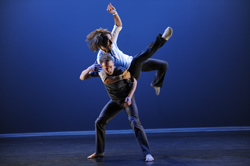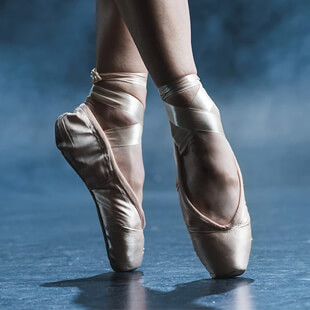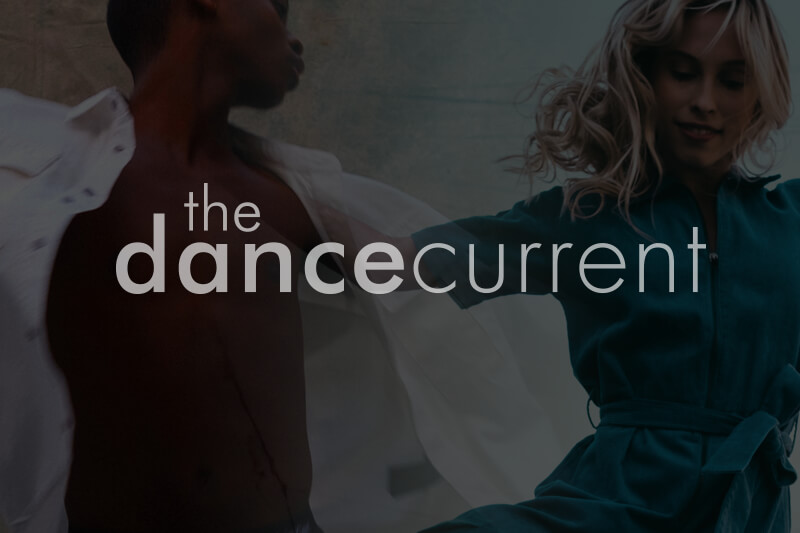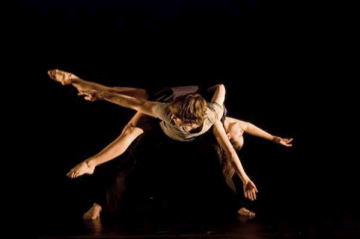The first review I wrote for The Dance Current was of a show exploring cross-genre collaboration, finding the points at which tap dance and bharatanatyam intersected. It was an ambitious and inclusive idea in theory, but for me it was a struggle to articulate why the performance itself did not realize its full potential. I applauded the move on the artists’ parts, asking questions and moving beyond the immediate purview of their own practices, but identifying why the work itself did not move me was quite a trial. My prejudgment was the problem, I learned. My expectation was that it should be harmonious; ten years later I ask: should it be?
Last month, I asked myself this question when I attended a joint program between The Chimera Project and Ritmo Flamenco. Bird Bee Bat Attack is a cross-genre collaboration featuring elements of contemporary dance and flamenco, among other things. For this performance, I embraced the potential messiness, disharmonies and counterpoints that might ensue. It was satisfying to see artists with differing movement practices work to find the points of intersection between dance genres; it required an open-mindedness to consider multiple theatrical practices under the umbrella of one evening. Bird Bee Bat Attack gave more than one artist a voice on the proscenium stage and showcased the multitude of voices that live inside our dance community.
By suspending expectation, I opened my eyes to an evening dotted with micro-explosions: of movement, of risk, of rhythm. The collaboration of Malgorzata Nowacka (The Chimera Project) and Anjelica Scannura (co-artistic director of Ritmo Flamenco) delivered, in one short hour, a variety of movement styles, nuanced performances and a bridge between traditional and contemporary performance traditions. I felt surges of power, right in my gut, and witnessed moments of unevenness — sometimes the result of cross-genre work.
In Barrio Flamenco, performed by Ritmo Flamenco (including guitarist Roger Scannura, dancer/artistic director Valerie Scannura and guest dancer Sachi O’Hoski), I saw the rhythmic and soulful elements steeped in the flamenco tradition. Virtuosic guitar work and thundering drumming provided a backdrop for a series of solos. The three female dancers, outfitted in long skirts and bodices, took turns maneuvering chairs, fans and castanets with an agility beyond my immediate comprehension. The work tapered with thundering heels in counterpoint with percussionists onstage and guitarist Scannura — enigmatic emotional performances spanned a spectrum from joy to tragedy. The dancers’ hands twist and gesticulate, scooping the air in such a way that new spatial patterns emerge and the stage space appears as more than a two-dimensional space. The intensity of gaze is endearing; the dancers in their various solos shift their focus violently from corner to corner, then pointedly towards the audience. The brilliant tempo of the first section is tempered with moments of slowness, where there’s space to ruminate and breathe with the dancers. Setting the precedent of traditional movement practices prior to the evening’s second, more experimental work provided a point of reference for traditional flamenco themes.
The program’s second piece, Bird Bee Bat Attack, seemed an experiment of sorts. I could tell there was much risk-taking involved on the part of all the dancers, both physically and stylistically. Attack featured a quartet of dancers — Anjelica Scannura, Malgorzata Nowacka, Daniel McArthur and Damian Norman — working with several vocabularies, such as pointed, complex flamenco rhythms via clapping, and the high-octane physical pursuits that characterize Nowacka’s work. The dancers begin splayed out on the floor, dressed in dark costumes under dark, fractured lighting while emitting guttural sounds and surprising with angular explosions of movement. Roger Scannura, cradling his guitar, hovers above them, seated on the second level above the stage, playing occasionally throughout the piece. His music is interwoven into a larger soundscore of a throbbing bass beat and, in one moment, metal. The dancers struggle through moments of stillness and contemplation, countered with sections exploding into forceful leaps and crashes to the floor. The partnering work is often aggressive and combative with the dancers sometimes releasing guttural cries that could have crescendoed into hyperventilation if they’d allowed. A particularly stunning duet between Angelica Scannura and one of the men to the sounds of the flamenco guitar highlighted the depth and breadth of Scannura’s movement vocabulary and diversity as a performer. Throughout the evening she shape-shifted within different dance genres but always maintained the same level of intensity and virtuosity. The same could be said for the cast of engaged and fierce dancers, taking physical risks with an intensity that characterizes The Chimera Project.
In Bird Bee Bat Attack, the exercise of cross-genre exploration indeed pulled me in. In certain moments, I could glimpse at where the artists found points of agreement amongst the forms being sourced. It seemed they were looking at the ways energy and power are mustered by the body in flamenco and contemporary dance and at how high-velocity movement is contrasted with moments of stillness and contemplation in both forms. I found that, while disjointed, the artists were successful in finding power, aggression and energy as main points of agreement. Movements from clapping, to stamping, to fully physicalized throwing of bodies across the stage (and to the floor) were where the points of intersection between genres and styles were successful.
I am left with a particular, searing image from this work: carefully advancing downstage at the conclusion of the piece, the dancers edge towards the audience while clapping and stepping a complicated tapestry of movement with explosive polyrhythms contrasting an intensity of gaze. I observed the knitted brows of some of the dancers as they work to clap and step with precision, the key word here being “work”. This moment is relevant to the larger subject of cross-genre collaboration: it’s not easy to do and the result is not always harmonious — there are forever learning curves in choreographic collaborations when they delve into movement practices outside one’s home practice. Sometimes it is unsuccessful. Sometimes it is disjointed. But the leap into these new practices, and the efforts these performers took to engage with rhythmic and theatrical practices, was brave, inclusive and a feat in and of itself.
Tagged: Choreography, Contemporary, Flamenco, Performance, ON , Toronto





